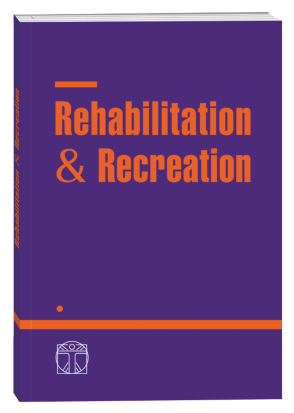THE ROLE OF DIAGNOSTIC INFORMATION OBTAINED THROUGH NON-INVASIVE INTERVENTIONS IN THE REHABILITATION PROCESS
DOI:
https://doi.org/10.32782/2522-1795.2022.11.3Keywords:
Non-invasive diagnostic, prevention of non-comunicable diseases, rehabilitation programAbstract
The Aim. Elucidation of important issues that is the base of the development of pathologies of certain functions of the human body and that can be corrected at any age. Materials and Method. Patients were divided into three groups according to the age. The first group was people who reach the first mature age (n=35). The second group was people who reach the second mature age (n=43). The third group was elderly people (n=21). According to questionnaire all participants of this study had low physical activities. The diagnosis was performed using a non-invasive blood formula analyzer AMP. The analyzer allows a comprehensive assessment of the organism from the standpoint of its functional-metabolic and hemodynamic balance, hydrogen metabolism, and gas homeostasis. Statistical data processing was performed using the statistical package MedStat. Result. Analysis of the indicators showed that Tiffno test, Pulmonary ventilation, maximum airflow and pulmonary ventilation were outside the norm into elderly people. In the all groups the values of heart work were outside the norm. Concentration of creatinine kinase of heart were low into the first group but higher over the norm values into the third group (р˂0,05). We noticed reduce of blood supply of skeletal muscles in the third group and high level of the concentration of lactic acid in the all participants. In the all groups we noticed low concentration of dopamine, increased width of the third ventricle of the brain, high the consumable capacity of life support and high working level of oxygen consumption (р˂0,05). Conclusions. Preventive measures must be aimed at optimizing functioning, health and well-being. In our study, the basis for creating a program of rehabilitation treatment is diagnostic information obtained by non-invasive intervention. The rehabilitation process should include retraining of breath, psychological support, correction of physical activity. The goals of the rehabilitation treatment should formed in accordance with the positions of evidence-based medicine.
References
Власик Л. Й. Медико-соціальне обгрунтування багатофакторної профілактики основних неінфекційних захворювань Клінічна та експериментальна патологія 2020. Т. 19, № 4 (74). С. 15–22. DOI: 10.24061/1727-4338.XІX.4.74.2020.3
Малихін А. В. Вегетативные пароксизмальные состояния и терморегуляция организма. Харьков 2012, 166 с.
Noninvasive Screening Analyzer (AMP) Operating Manual. User’s Manual. Kharkiv. 2012, 166 p.
Лях Ю. Е., Гурьянов В. Г., Хоменко В. Е., Панченко О. А. Основы компьютерной биостатистики: анализ информации в биологии, медицине и фармации статистическим пакетом MеdStat. Донецк, 2006. 211 с.
Sheline Y. I. Neuroimaging studies of mood disorder effects on the brain. Biol Psychiatry. 2003 Aug 1; 54 (3): 338–52. doi: 10.1016/s0006-3223(03)00347-0. PMID: 12893109.6.
Заіка В., Вишар Є., & Гета А. Особливості впливу занять фізичною культурою на рівень психологічного самопочуття людей похилого віку. Актуальні проблеми фізичного виховання різних верств населення, 2021. С. 41–49. http://journals.uran.ua/hdafk-tmfv/article/view/250794
Медична реабілітація. Підручник. Під ред. Сокрута В. М., Яблучанського М. І. 2015. C. 576.
Downloads
Published
How to Cite
Issue
Section
License

This work is licensed under a Creative Commons Attribution-NonCommercial-NoDerivatives 4.0 International License.











